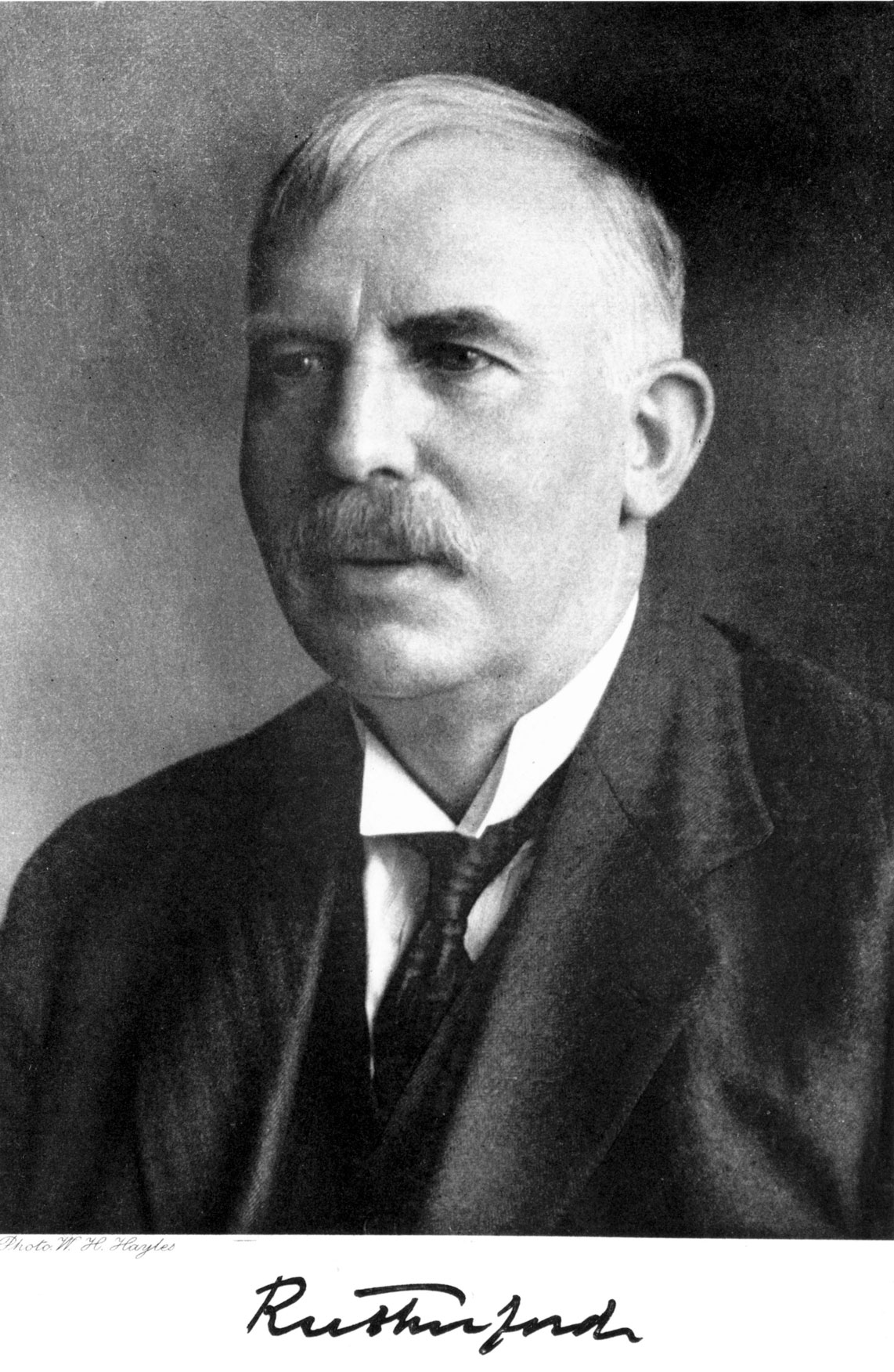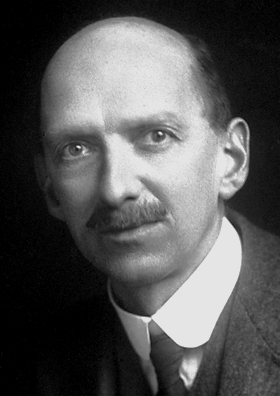Content Developer Rupert Cole explores some famous moustaches in particle physics ahead of the opening of our new Collider exhibition on 13th November.
It’s that time again: Movember – the eminently charitable moustache-growing month raising awareness for men’s health. But what, you might reasonably wonder, has facial hair got to do with particle physics? Well, I have a theory; one backed by hard pictorial and anecdotal evidence…

Consider the glory days of Cambridge’s Cavendish Laboratory, during which the first subatomic particle was identified, a revolutionary particle detector invented, and the atomic nucleus split by one of the first particle accelerators. Significantly, the great Cavendish leaders and pioneers of this period cannot be accurately described as clean shaven.
Joseph John Thomson
JJ Thomson has a “rather straggling moustache,” wrote a talented student called Ernest Rutherford in 1896, “but a very clever-looking face and a fine forehead”. In another letter to his fiancé, Rutherford made the additional comment that Thomson “shaves very badly”.
We may detect a hint of jealousy in Rutherford’s description of Professor “JJ”. As, according to one chronicler of the lab’s history, the young student Rutherford possessed only “a thinly sprouting moustache”.

Nevertheless, concealed in Thomson’s supposedly wayward bristles was a creative and audacious genius. At the time, the Cavendish’s director had been performing his groundbreaking experiments on cathode rays. The next year he shocked the scientific world when he announced the existence of a particle smaller than the smallest atom – later dubbed the “electron”.
Ernest Rutherford
Once the rambunctious New Zealander’s lip-hair had acquired its full bushy substance, he was well on the way to scientific stardom.
His first momentous contribution to physics came in 1902 at McGill University, Canada. Rutherford and his colleague Frederick Soddy explained what radioactivity actually is – the process of atomic decay.
Soddy described his co-discoverer simply as an “exuberant natural, young man with a moustache”. Biographers would later characterise Rutherford’s ever-growing asset as reminiscent of a “walrus”.
By the time he succeeded his old moustachioed mentor, JJ Thomson, as Professor of the Cavendish, Rutherford had already discovered the atomic nucleus (1911) and managed to split nitrogen atoms in half, causing them to transmute into two oxygen atoms (1917-19).
But it was at the Cavendish that he ushered in the era of accelerator physics. Contemporaries recall a particular accessory: a pipe, containing the world’s driest and instantly-flammable tobacco.

On one Spring day in 1932, Rutherford entered the lab in a famously foul mood. His pipe “went off like a volcano” – having pre-dried his tobacco on a radiator. Impatient at the progress his young researchers John Cockcroft and Ernest Walton had made with their 800,000-volt proton accelerator, he instructed them to “stop messing about… and arrange that these protons were put to good use”.
At Rutherford’s suggestion, they immediately installed a zinc-sulphide scintillation screen – a device which causes charged particles to sparkle when they hit – into their wooden observation hut. A few days later, Walton saw on this screen evidence that their machine was splitting the nucleus of lithium atoms!
Had the authority of the tache and pipe not intervened, the Cavendish men may have been pipped to the discovery by the clean-shaven American teams, who boasted the biggest and best of accelerators.
Charles Thomson Rees Wilson
CTR Wilson, one of Rutherford’s fellow students at the Cavendish, was a
“modest” personality with a similarly unassuming moustache. He spent 16 years assembling cloud chambers – a device he initially invented to study meteorological phenomena.
A keen mountaineer – an activity that always complements well-trimmed bristles – Wilson derived inspiration to build cloud chambers when he was atop Ben Nevis, observing beautiful optical effects.
His third and final chamber, completed in 1911, was later described by Rutherford as “the most original and wonderful instrument in scientific history”. Incredibly, it could capture with photographs the tracks of particles. Wilson had invented the first detector that could visualise and record the subatomic world.

It seems remarkable that the humble moustache may have had such a crucial role in the foundation particle physics. Never again would the Cavendish be led by lip-hair champions; and considering the lab’s unprecedented success in this golden period, we can reliably infer the cost of this absence.
I leave you with the words of Arthur Eddington: “An atom which has lost an electron is like a friend who has shaved-off his moustache.”
Next week you can see Thomson’s cathode-ray tube, Rutherford’s atomic models, the Cockcroft-Walton accelerator, CTR Wilson’s cloud chamber, and much more at the Science Museum’s new Collider exhibition.
For more famous physics moustaches click here.
2 comments on “LHC: Lip Hair Champions”
Comments are closed.
Renormalisation.
Another long time moustache physicist: Dutch Nobel Prize winner Gerard ‘t Hooft.
When one keeps in mind that one of his main contributions to particle physics is all about ‘renormalisation’, I guess the shape of his moustache starts to make much more sense.
As this article is connected to the Science Museum I do not believe you should be stating that “(He) managed to split nitrogen atoms in half, causing them to transmute into two oxygen atoms”. The reaction is N + α → O + p (Nitrogen 14 transmuted to Oxygen 17 with the release of a proton).
Your statement implies some magical doubling of nuclear material which can only serve to confuse the reader.
Despite this criticism, the comparison of the deeds of the more hirsute physicists from the golden years is entertaining. It is a pity that Paul Dirac must be excluded on grounds of age rather than facial adornment.